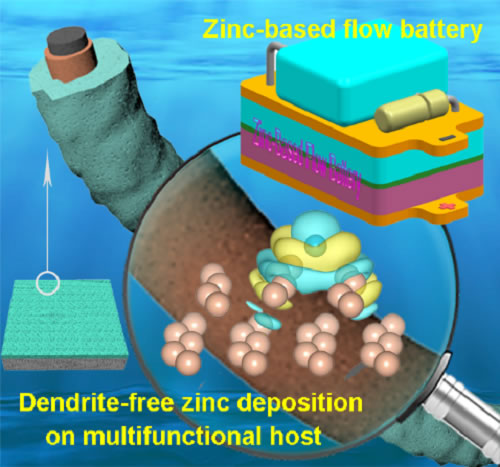Recently, the team of researchers Li Xianfeng and Zhang Huamin of the Energy Storage Technology Research Department (DNL17) of the Dalian Institute of Chemical Physics, Chinese Academy of Sciences proposed a strategy for sputtering a metal tin layer on a 3D porous carbon felt electrode using magnetron sputtering technology. The induction of zinc deposition morphology is achieved in aqueous zinc-based batteries, which effectively reduces the electrochemical overpotential of zinc deposition, eases the growth of zinc dendrites, and significantly improves the coulombic efficiency and cycle life of zinc-based batteries. Zinc negative electrode has the characteristics of low intrinsic electrode potential, fast kinetics, good circulation, and abundant reserves. In zinc-bromine, zinc-iodine, zinc-cerium, zinc-iron flow batteries, zinc-nickel batteries, zinc- The fields of air batteries and zinc ion batteries have attracted wide attention from researchers. However, the uneven deposition of zinc leads to the growth of dendrites, which will pierce the separator and cause the interpenetration of the electrolyte, which reduces the battery's coulombic efficiency, and at the same time causes the battery to short-circuit, resulting in rapid degradation of battery performance; Shedding not only reduces the battery's coulombic efficiency, but also causes the electrolyte circulation flow path to block and affect the uniformity of the flow field distribution, thereby shortening the battery's cycle life. To this end, the research team chose low-cost metal tin as the morphology-inducing material for electrochemically deposited zinc, using magnetron sputtering technology to make tin firmly deposited on the carbon felt negative electrode with a 3D structure without a binder , Effectively reducing the zinc deposition overpotential and easing the growth of zinc dendrites. Compared with the base material, whether it is a zinc-zinc symmetrical flow battery or a zinc-bromine single-flow battery, its cycle stability and coulombic efficiency can be significantly improved. In addition, the research team carried out in-situ characterization of the zinc deposition process using an ultra-depth microscope, combined with theoretical calculations, to briefly analyze the causes of zinc deposition induction. This work provides new ideas for the research of zinc anodes and other metal anodes. Related research results were published in "Advanced Materials" (Advanced Materials) recently. The above work was supported by the National Natural Science Foundation of China, the China Postdoctoral Science Foundation, and the Chinese Academy of Sciences STS project.
HDPE Sheet, PE 500 sheet is used in a variety of applications and industries where excellent impact resistance, high tensile strength, low moisture absorption and chemical and corrosion resistance properties are required. And PE sheet has good insulation properties and is easy to weld. The operating temperature of HDPE is from -50°C to +90°C
polyethylene plate, polyethylene board,hdpe plate, pe plate, hdpe board,Pe board Shenzhen Anheda Plastic Products Co.,Ltd , https://www.ahdplastic.com